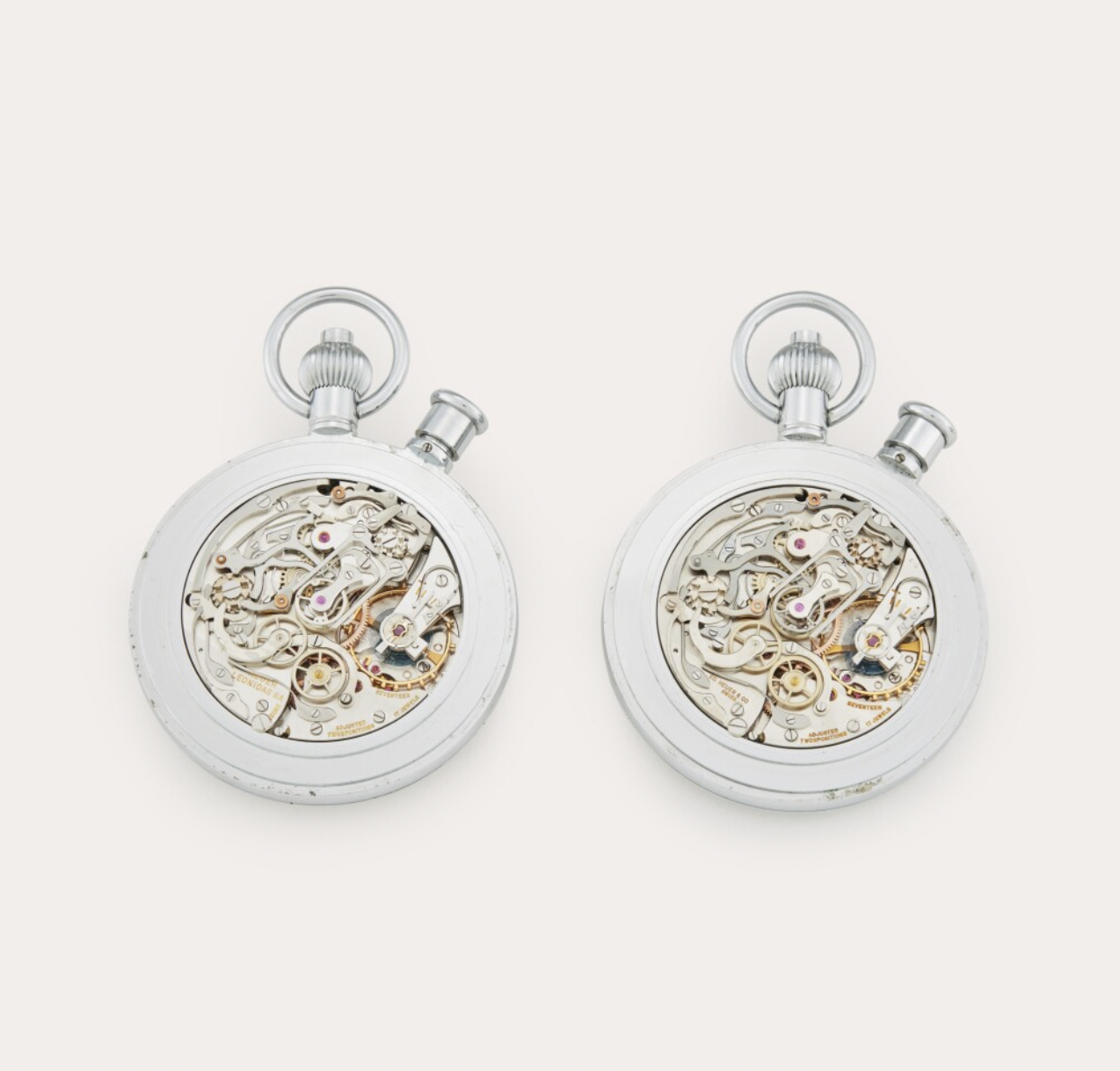Reference 11.202, A Split-Seconds Chronograph with fitted leather case and leather strap, Circa 1965
As long as competitors have been racing – whether on foot, on horses, in cars, boats or planes -– they have needed timepieces to measure the time differential between them. Lap after lap, race cars pass the start / finish line, and team members and race officials determine whether the gap between them is increasing or decreasing.
In the time-speed-distance (TDS) rally, the participants face a similar challenge, needing to determine the differential between the arrival time specified for a particular checkpoint, and the actual arrival time for the car, with points assessed based on the differentials.
The split-second (rattrapante) chronograph is the essential timepiece to address these challenges. In addition to indicating the time-of-day in a highly legible clock, by incorporating two thin second hands superimposed, one above the other, the team member or race official is able to determine the time differential between two events.
Commencing in the late 1880s and continuing for almost 100 years, Heuer offered split-second chronographs for competitors. The highly-complex movements earned them the title, “the queen of complications” for chronographs, and they were always the most expensive timepieces in the Heuer catalog. These were handheld instruments, with Heuer suggesting that wrist chronographs would be too small to provide accurate information, especially in racing condition.
With sports car rallies becoming popular in the 1950s, Heuer designed a new type of leather-covered case for its split-second chronographs. Officials or competitors would set the time, start the chronograph and then place the timepiece into the hinged holder. The split-second hand could be operated by the pusher that extended above the left side of the timepiece, while a pin on the right side locked the case, ensuring that the time-of-day and chronograph could not be changed, whether by accident or in an effort to tamper with the timekeeping.
In the 1960s, Heuer offered a program under which it rented these timers to sports car clubs, ensuring that the club would always have state-of-the-art equipment. This contributed to these timepieces becoming de facto standard equipment for both amateur and professional rallies in this decade.




